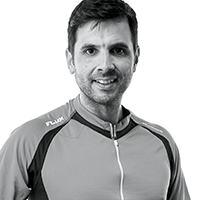If you're thinking of buying a new bike for your offspring this Christmas, you'll want to make sure that not only are you getting good value, but you're buying a bike that'll encourage them to ride, rather than put them off! This month's mag comes with our free Ultimate Guide to Kids' Bikes and inside you'll find a comprehensive buyer's guide covering what to look for and the various models that are available, plus a whole range of kids' kit and suggestions about where to ride. As part of that, we spoke to UK-based Black Mountain Bikes and Islabikes – two key industry players who are changing the way we think about kids' bikes. Here's what they had to say....
Andy Lloyd, Black Mountain Bikes
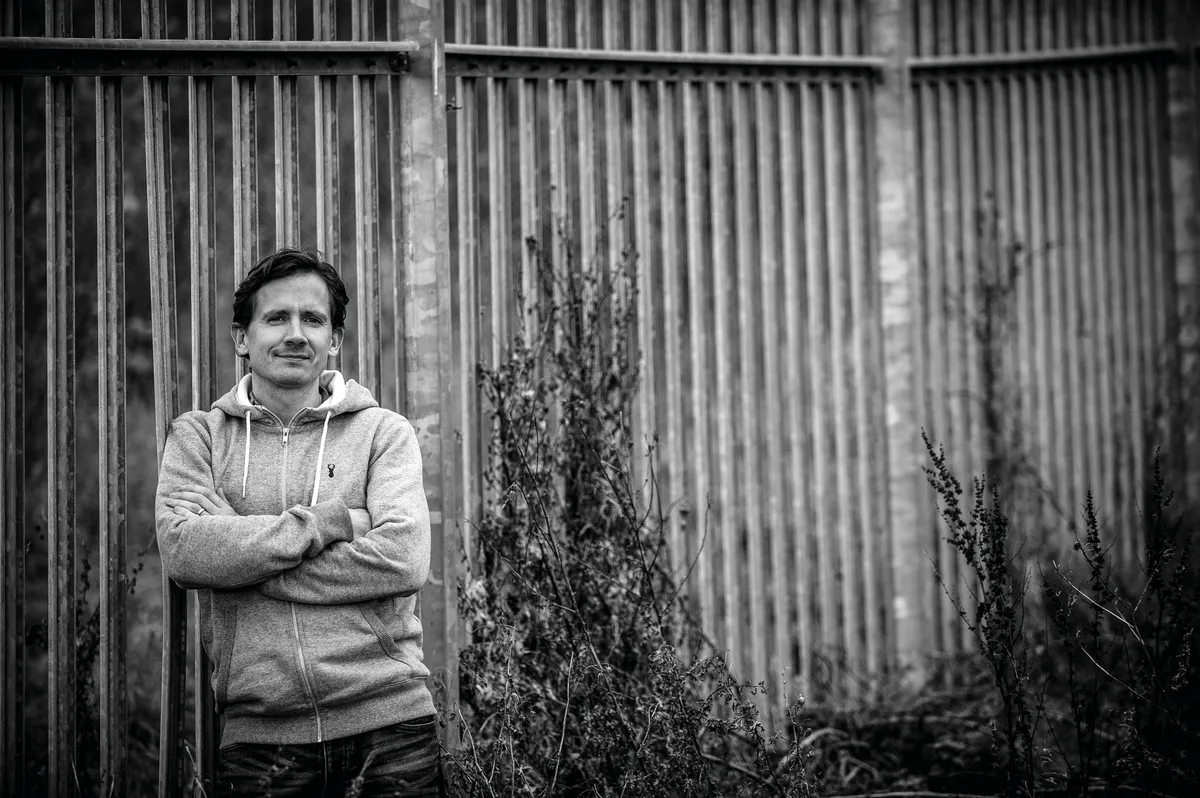
MBUK: Tell us what Black Mountain Bikes is all about...
Andy: Black Mountain Bikes is a team of designers, engineers and mad-keen cyclists who realised that when it came to children’s bikes there was a major issue… kids grow and their bikes don’t! We were fed up with buying bikes for our own children that they quickly outgrew. We wanted to end the ‘sizing compromise’, where parents had to either buy a bike today that would fit their child but they'd soon grow out of, or buy a bike that was way too big for them but they'd grow into. We believe that, in 2018, the product should be better, the solution should be smarter.
We wanted a bike that would fit a rapidly-growing child for at least two years. Getting the correct fit is vital when a child is learning to ride. Not only the frame size, but also the gearing – it needs to be easy to pedal at the beginning, then progress to a higher gear as the child gets stronger. We also recognised that the transition from a balance bike to pedalling is a vital but difficult task to master, so we made this easy by making our bike convert from a balance bike to a pedal bike.
Our bikes are the ultimate learning bikes, and if you get a child learning early and confidently at the start, you'll have a mad-keen cyclist on your hands.
Why did you start Black Mountain Bikes?
I started Black Mountain Bikes because I became really frustrated with what was available on the market. The initial idea came about back in 2010 after I'd bought my then five-year-old son a pretty terrible bike. It was incredibly heavy, the brakes didn’t work properly, the gearing was too hard, the handlebar was up around his chin and the worst thing was that he grew out of it very quickly, both in terms of sizing and gearing.
I have a background in motorsport engineering, and decided there and then that I could do a better job. I started doodling and made a few Lego models. In between the day job, I then set to work in my garden shed, where I made prototypes out of an eBay job lot of old kids' bikes and steel tubes, which were test-ridden by my kids. I thought we were onto something, so I started a business, found factories to make the bikes. Seeing and hearing from kids who've learned to become really good riders on our bikes is really pleasing and makes it all worthwhile.
How exactly do your bikes work and differ from what else is on the market?
We’ve totally revolutionised kids' bike design, by designing for growing young riders, not just miniaturising an adult’s bike. For starters, we've ditched the traditional diamond-shaped frame that you see on most children’s bikes. Conventional bike frames just didn’t make sense to us. They missed the point that kids are growing and pedalling stronger every day. So, we’ve created a super-lightweight bike that starts out as a balance bike (Mode 1), then you swap out the balance seat tube for our pedal seat tube, which is supplied with the bike and includes the cranks, bottom bracket, etc. This turns the bike into a small pedal bike (Mode 2). You then move a few bolts around and the bike grows into a large pedal bike (Mode 3). The bikes really are three bikes in one, and the balance bike to pedal bike transition really helps kids make the leap from balancing to pedalling.
The other key thing to note is that when you swap between the small and large pedal modes, the gearing also changes. We have a pretty ingenious rear hub that allows you to switch between two gears as you change size. It’s a two-stage belt-drive system – a world first. The reason for this? As kids get bigger and more confident on their bike, they also get stronger. They first outgrow a bike because they begin to pedal it too easily, and then they can’t ride fast enough. The harder gear allows them to fly along and really develop.
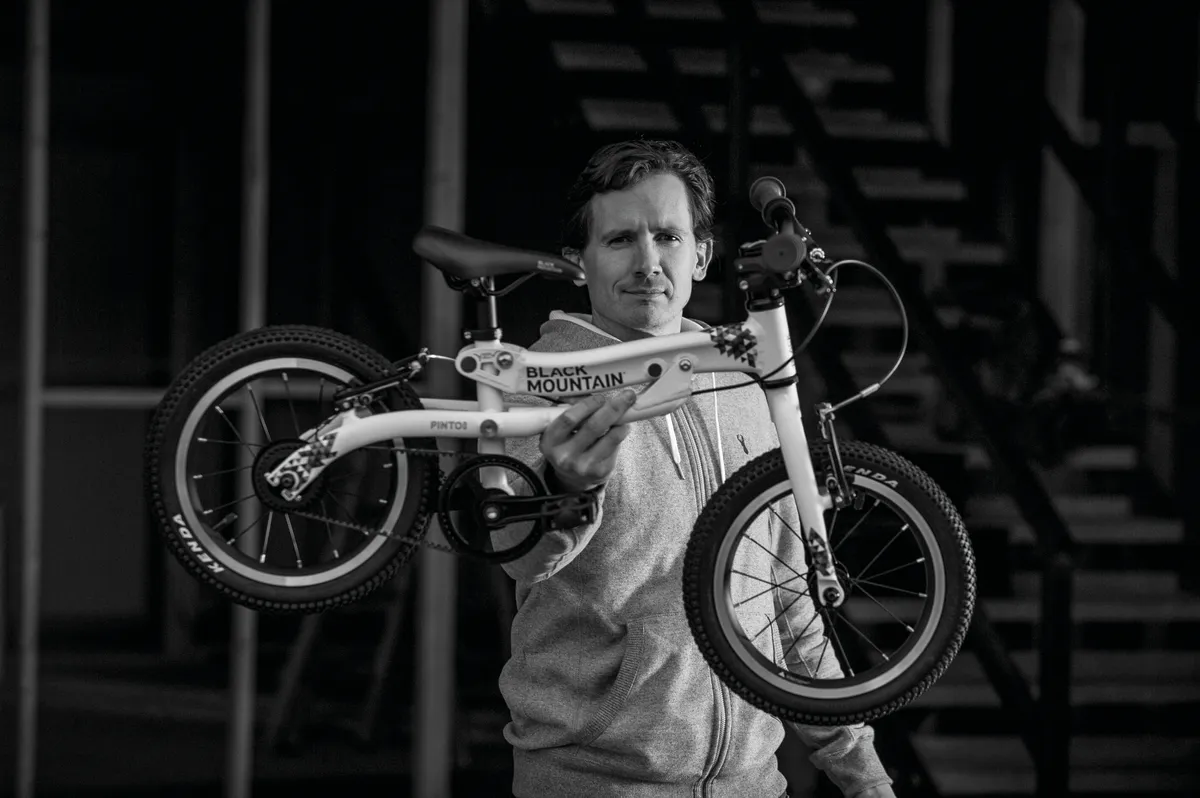
What sets you apart from the rest?
Our bikes are super-lightweight with proper components, sized for small riders, and our unique lightweight, clean belt-drive system. But that’s just the baseline. We believe that our growing frame technology will end the ‘sizing compromise’ that all parents face when buying a bike. Other bikes on the market are old-fashioned by comparison – they're just one size and one gear, so you have to choose a bike that's either outgrown too easily or oversized to grow into later. Vacuum cleaners don’t have bags any more, and kids bikes shouldn’t have fixed frames. Our bikes inspire confidence and successful learning as they transition from balance bike through two stages of growth. We believe this makes them the easiest kids' bikes in the world to learn to ride on.
What age groups are you targeting?
We prefer to use height rather than age to size our bikes, because kids grow at different rates, but our Pinto is roughly aimed at two-and-a-half to five-year-olds (90-109cm), and our Skøg at five to eight-year-olds (102-121cm).
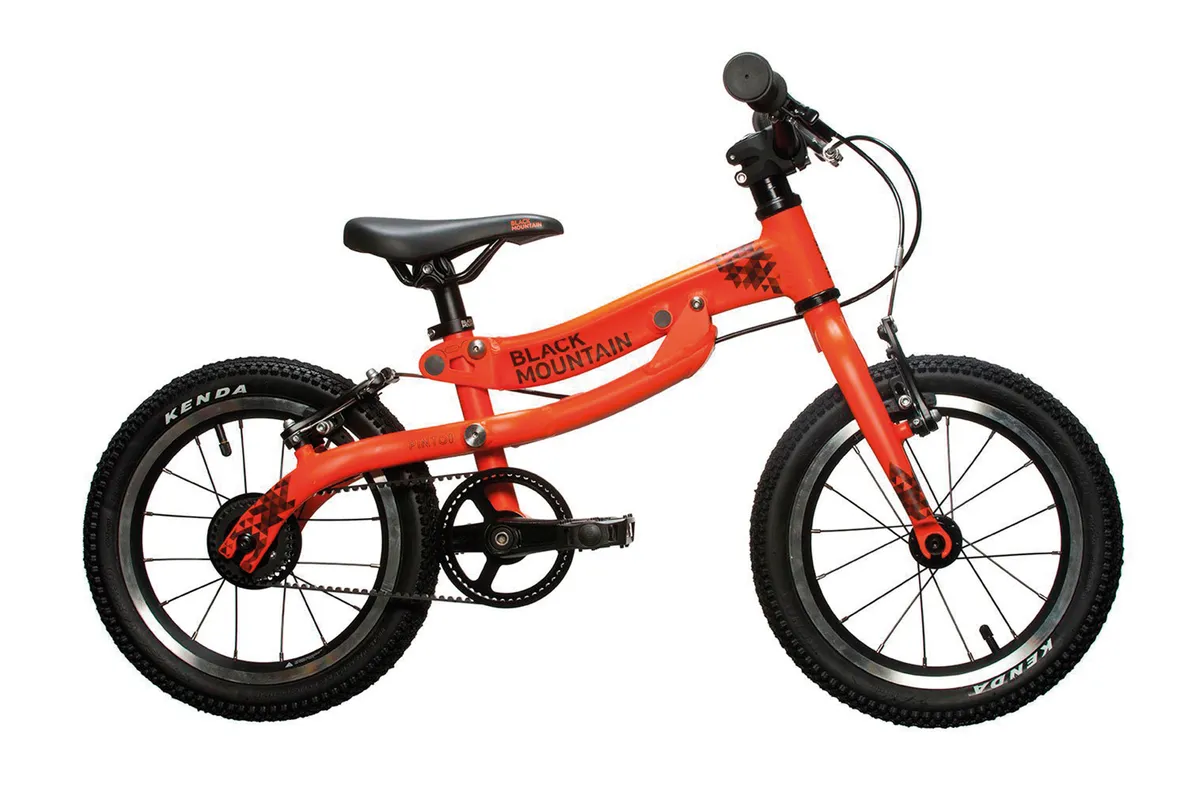
What do you see as the single most important thing about getting kids into riding mountain bikes?
The obvious benefit has to be being outside and staying active. Biking is a great fun thing to do, physically and socially. It’s also a great family sport, where the whole family can enjoy the same thing at a very similar level. And there’s no screen time involved!
And what about getting their parents to encourage them?
We've had 100 per cent positive feedback from parents we have spoken to. It's the ones we haven’t spoken to that we need to hear from! Anyone who's a cyclist will want to get their kids on bikes as soon as possible. We’ve had people trying to buy bikes whose babies haven’t even been born yet! For those non-cycling parents, we just need to make them release that cycling is safe, fun and really good for their child’s physical and mental wellbeing. Our bikes are super-safe – tested to the international standard ISO8098 (not all kids' bikes are, even from some of the premium brands) – and if kids learn early and learn well, they become successful, safe riders.
What’s the most important thing to a child about the bike they own – and how do you approach that?
I hate to say it, but most probably colour! Most three-year-olds aren’t going to tell you that they like the head angle or that the wheelbase is perfect, but they will tell you if they like the colour or not. You have to watch lots of kids on lots of bikes to see what's important, they're unlikely to be able to tell you. Being light in weight is vital, especially when balance biking. You watch a kid dragging a heavy bike around, not being able to turn properly… it’s not nice to see. So we get all the boring stuff right and hope they like the colours! We’ve tried to be quite gender neutral with the colours, picking ones that'll appeal equally to boys and girls.
What involvement do kids have in the research and development of your products?
This is fundamental to our existence and design philosophy. I have a background in motorsport engineering, and when teaching my kids to ride balance bikes and pedal bikes, I observed all the stages and phases of rider development, and noted all the issues and shortcomings of the bikes they were using. I then set about designing a kids' bike that was 100 per cent based around the growing, developing rider. My kids were the test pilots for all the prototypes, so our geometry, gearing and sizing has all been real-world developed, not just on the CAD screen. Then, as we developed the range, friends' and family's kids were roped in to help, even with our colours, branding and model names.
How can we encourage more kids of all ages to get out on mountain bikes?
I think we need more safe places to ride. Our local trail centre at the Forest of Dean is a great example. It has family trails, skills loops, a pump track and then all the ‘grown-up’ forest loops and downhill tracks. There's a clear and obvious route of progression there. Their Little Fodders kids' club is heavily oversubscribed, with people coming from miles away just to be part of it. If you could have places like that but in miniature in parks in towns and cities all over the country, it would be great. It's happening already, but more of the same can only help.
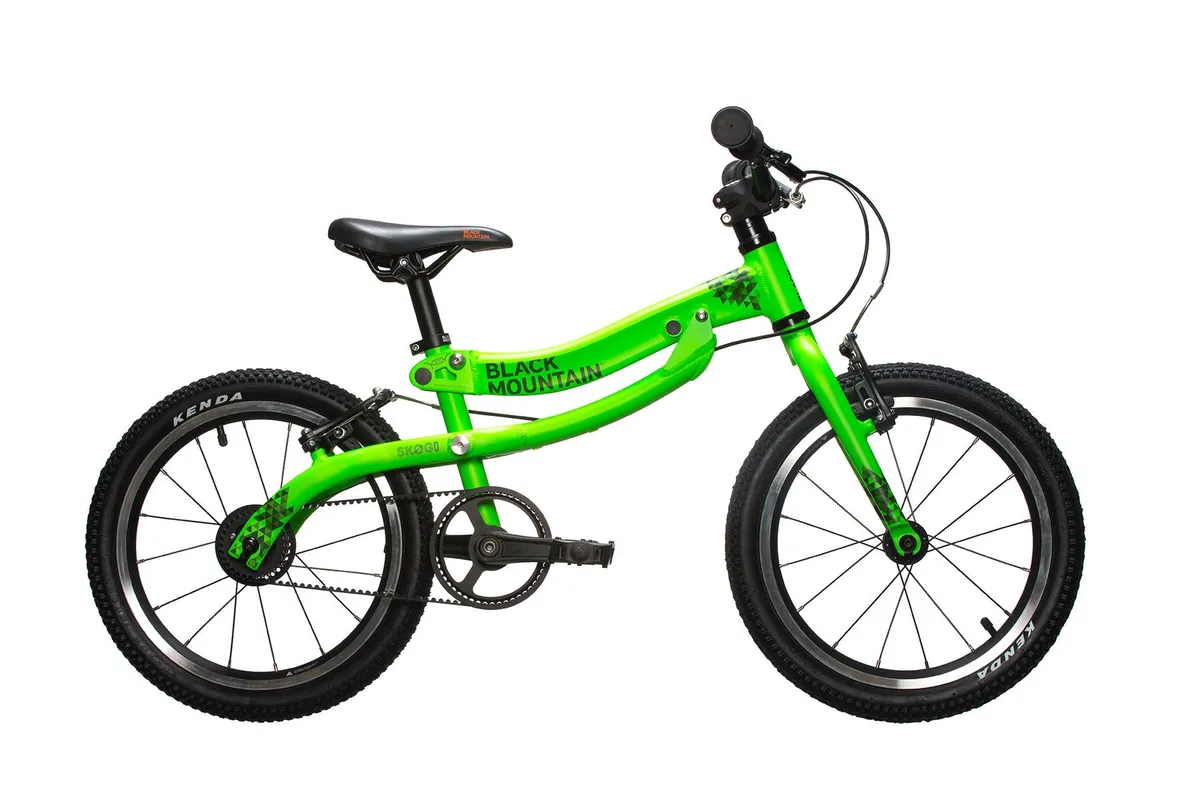
What advice would you give anyone wanting to get their kids into riding mountain bikes?
Buy one of our bikes! A light, correctly-proportioned bike that grows with them is a great place to start. We’ve seen so many kids in tears on long bike rides when even the gentlest false flat makes a heavy, cheap kids' bike an absolute nightmare to pedal (think that each kilo of weight on a kids' bikes is like 5kg on an adult's bike!). Then get out there with them. Keep it fun, keep it light. Don’t drag them around a 10-mile hilly loop if you know they aren’t going to enjoy it. If you can, when you're at home just keep the bike out, have it always available, don’t hide it away in the shed. Make it an everyday thing.
Do you think there are enough good places to get kids started in mountain biking – and how necessary/important is that?
As with most things, it should start at home with the parents. I’d love it if all schools offered cycling as part of PE classes (I know some do). The traditional bat and ball games are great, but why not cycling? I know that there are issues of equipment, space and safety, but childhood obesity is on the rise, why not look at new ways of tackling it? It has to be worth it in the long run. And more clubs like the Little Fodders.
What’s next – what are your ambitions for the business?
To continue to grow and to establish ourselves as one of the market leaders. We also have more bikes in the pipeline, which will be appearing in the near future.
Steve Chapman, Islabikes
How did Islabikes start?
Islabikes was founded in 2006 after [former pro racer] Isla Rowntree was asked by her sister what bike to buy for her children. The truth was, Isla couldn’t hand on heart recommend any. At the time, children’s bikes were incredibly heavy with disproportionately sized componentry. Even safety-critical features such as brakes featured levers that small hands couldn’t operate. With this in mind, Isla set about starting Islabikes.
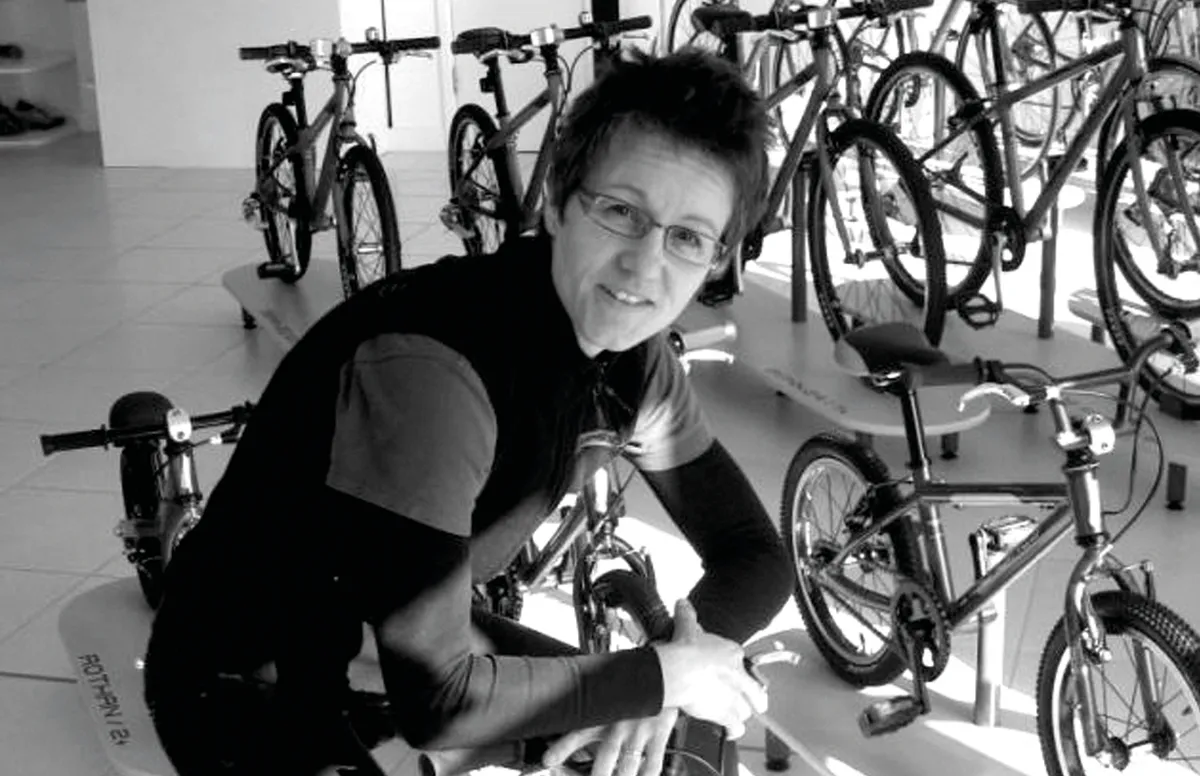
What’s special about your bikes and what sets you apart from the rest?
This is something we're asked a lot. The simple answer is that we don’t make compromises. Our bikes are incredibly lightweight, with proportionately sized, bespoke componentry. We put a big focus on taking a holistic approach to design, with each component choice complementing the next. As we get larger as a company, we continually invest in new tooling and opening moulds to allow us to continue tailoring the ride experience to being absolutely the best it can be.
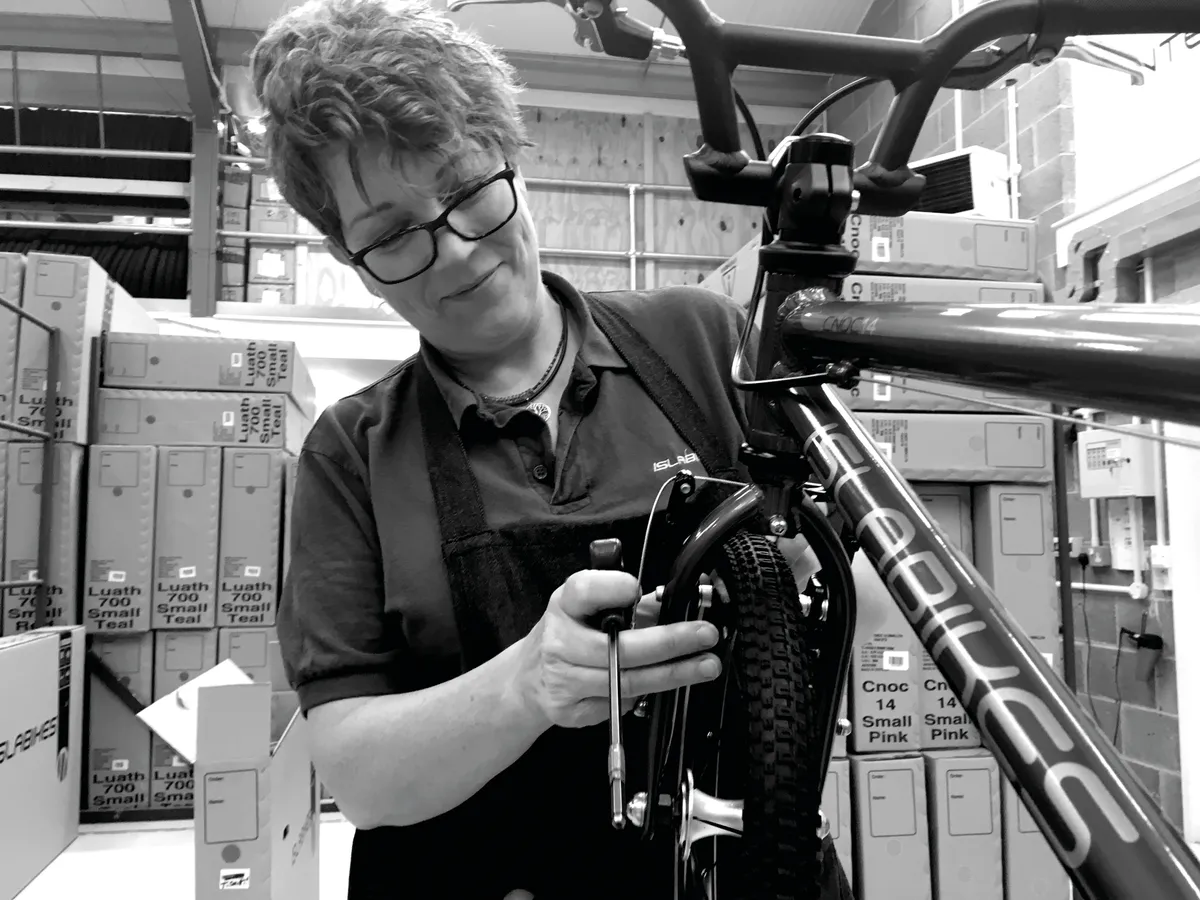
Can you tell us more about the Imagine Project?
The Imagine Project is a long-term research and development project that runs in parallel to the main Islabikes business. It’s a team of five Islabikes staff (including Isla) who are working towards a fully circular supply chain. The aim is to be the cycling industry experts in the sustainable supply of bicycles.
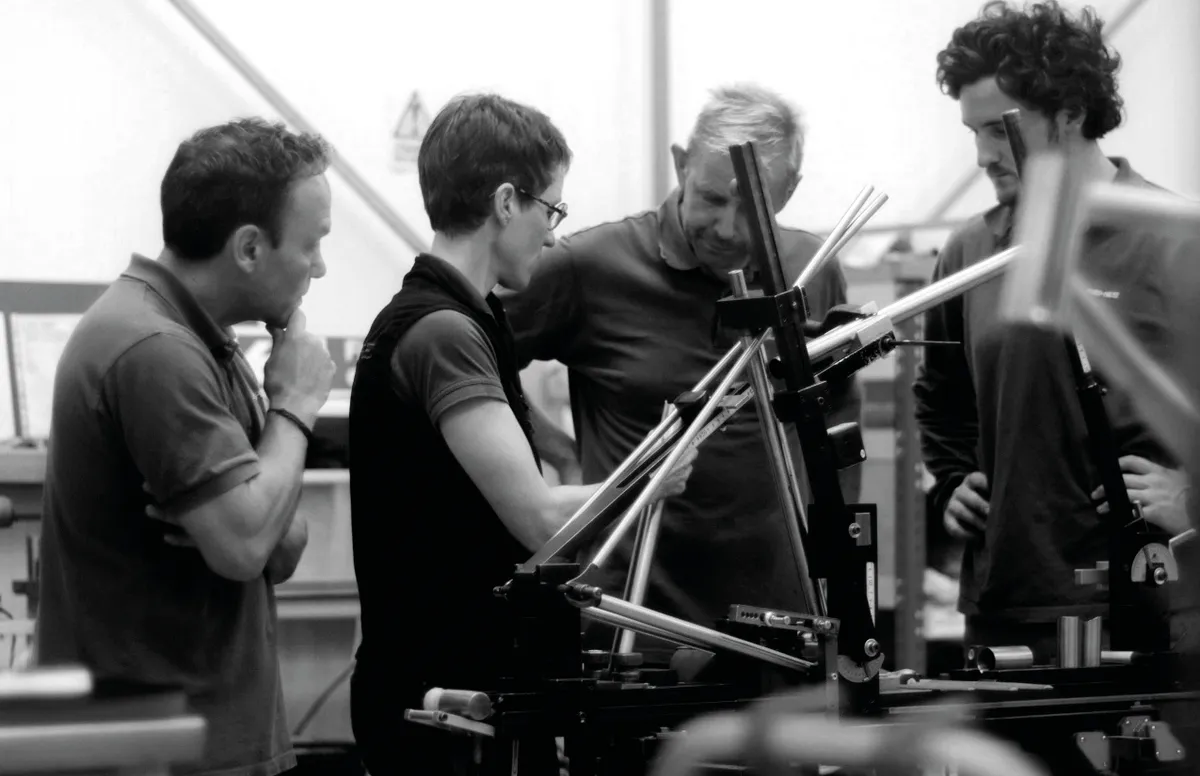
What age groups are you predominantly targeting?
Our children’s bike range is aimed at children as young as two. We then make bicycles that'll take them right up into adult sizes. We also make adults' bikes.
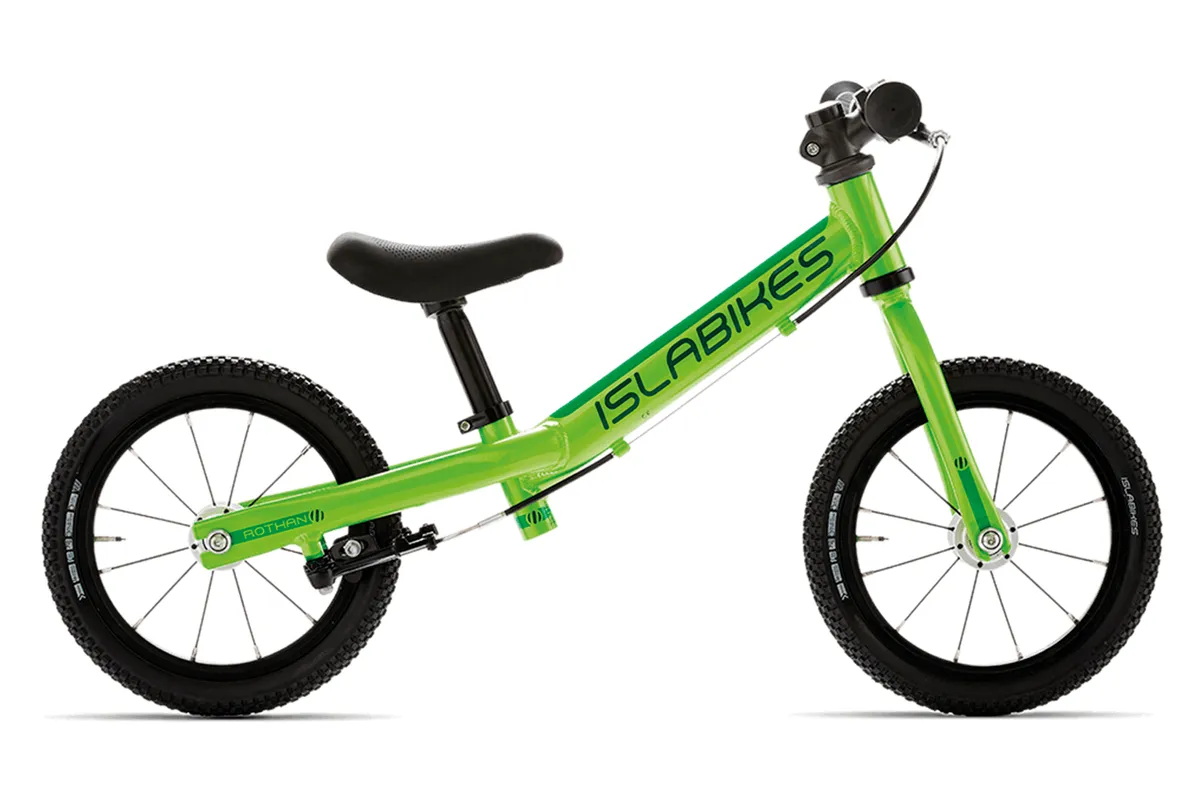
What’s the single most important thing about getting kids into riding mountain bikes?
From our perspective, getting kids into anything active is a good thing and if it’s a cycling-related thing, then that’s even better. The great thing about mountain biking is the places it can take you. We’re a company of cycling enthusiasts in all its forms but the feeling of exploration you get from mountain biking is hard to beat.
And what’s important about the way parents should help get them into it?
I think the key is to not rush it. It’s understandable and fairly common that bike-mad parents are really keen to get their children into cycling as well. This is great, but it’s important that an interest in cycling is shared at the child’s pace. In the early days, it’s all about ensuring kids have positive experiences of cycling and turning up the volume on adventure nice and slowly.
What’s the most important thing to a child about the bike they own – and how do you approach that?
In my experience, kids tend to focus on the colour of the bike first, and second to that is whether it looks like Mum and Dad’s bikes. We completely get this, so we like to offer vibrant colours with high-quality graphics and components. In the past, there’s been a tendency for children’s bikes to have features added that are completely unnecessary in order to appeal to children who want their bike to look more like Mum or Dad’s. The classic example of this is suspension – most notably, steel suspension forks on 20in-wheeled bikes and smaller.
At this size, children are rarely heavy enough to get past the stiction on a fork. When you consider the added weight that comes from adding a solid steel, lookalike suspension fork and its inherent poor performance, it really is no surprise children struggle. With our range of bikes, we only spec suspension forks on the Creig mountain bike model with 24in wheels and above. On these bikes, we spec a high-quality, lightweight, air-sprung suspension fork. This enables you to tailor the fork to the rider’s weight, which is key to achieving the intended performance.
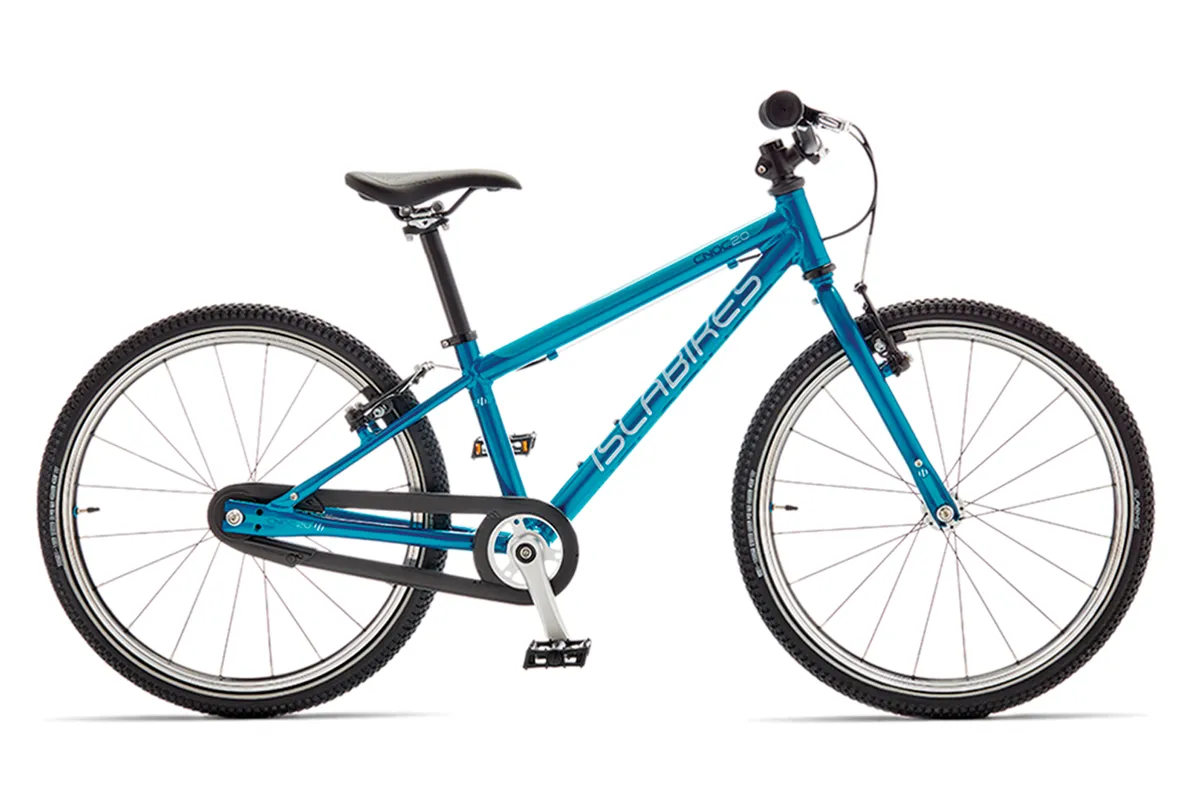
What involvement do kids have in the research and development of your products?
We have a packed events schedule and travel round to as many events as possible in a year. Events such as Tweedlove in Peebles give us a unique opportunity to be immersed in a cycling-mad community chock full of super-talented kids. We make a big effort to spend time with the kids and parents to gain feedback on what they’d like to see us do. This is critical to future development plans.
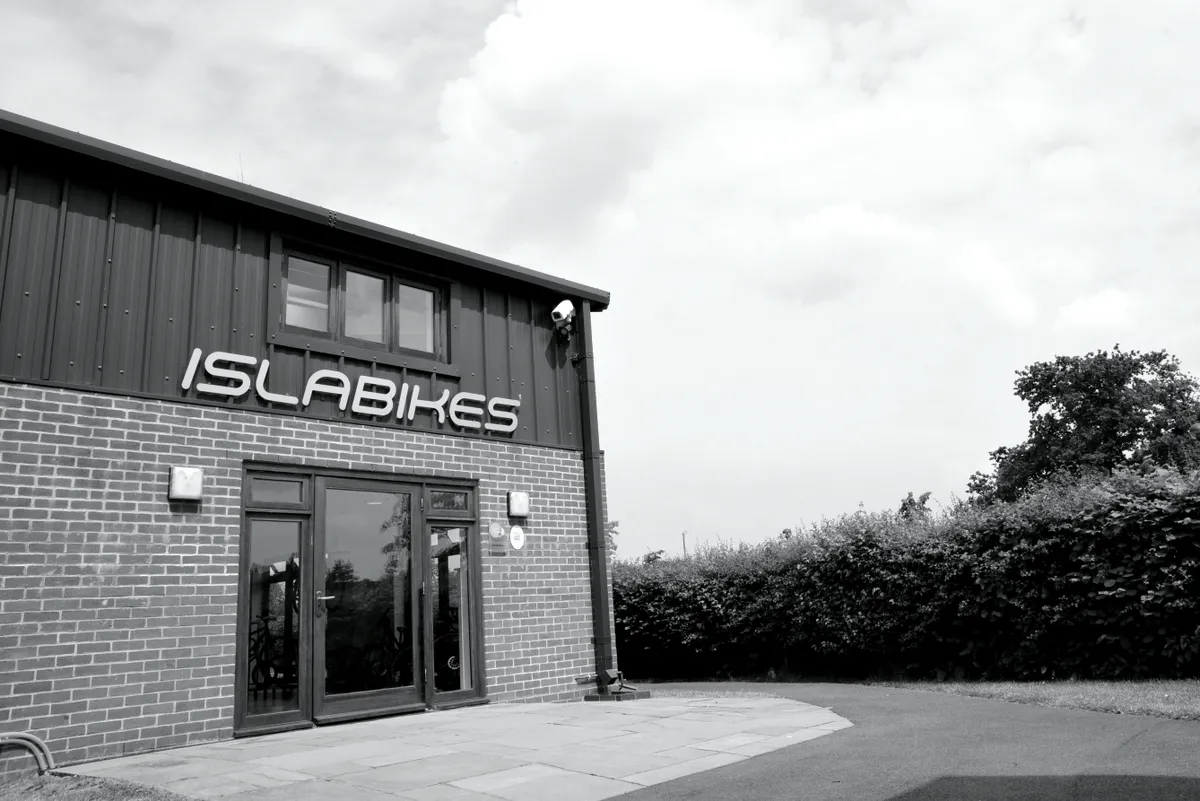
What advice would you give anyone wanting to get their kids into riding mountain bikes?
Give them time to take it at their own pace, this is so important. It’s all about facilitating positive experiences and creating an environment that's encouraging. Start small and don’t be tempted to put them on too much bike for the terrain they’re riding. As their skills progress, you can then introduce them to more challenging terrain.
Do you think there are enough good places to get kids started in mountain biking – and how necessary is that?
I think mountain biking is in a good place at the moment, the level of infrastructure is seemingly on the increase all the time. The advent of the trail centre has marked a real step change in the accessibility of mountain biking and has made it easy for families to enjoy the trails together.

